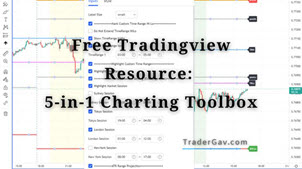Ever sat in front of your screen, finger hovering over the buy button, heart pounding like you’re about to defuse a bomb? Yeah, me too. It’s called “Afraid to Trade” syndrome, and it’s the silent killer of retail traders—especially those with small accounts. Why? Because hesitation is expensive. The market doesn’t wait for you to […]
blogs
22 years of Trading: A Twitter Thread Worth Reading [2022]
An excellent Twiitter thread shared by an experienced trader. Worth reading for both experienced and new traders alike.
FREE TradingView Indicator: Simple Charting Toolbox
I consolidated the tradingview tools I have been using into a single indicator. Feel free to use and share it.
5 facts about day trading
Thinking about day trading? Here are the 5 facts about day trading you need to know
Lecture notes series: Percent Risk Model
Here are some notes about Percent Risk Model. Important concepts for new traders.
Talking about $Risk/Reward and winning%, in Twitter-style
A short Twitter discussion about the importance of a higher probability setup and risk/reward ratio. And I have found out…







